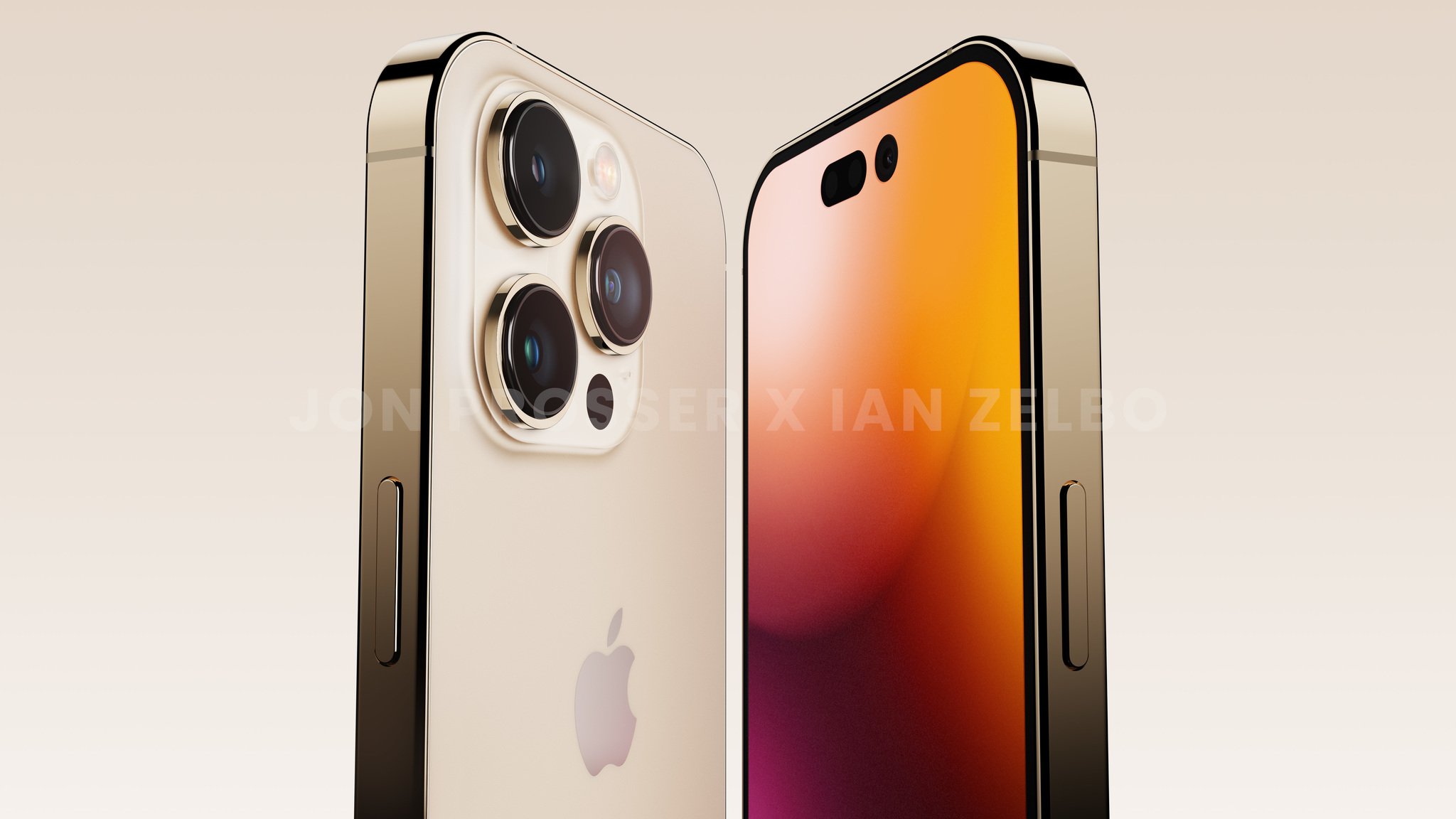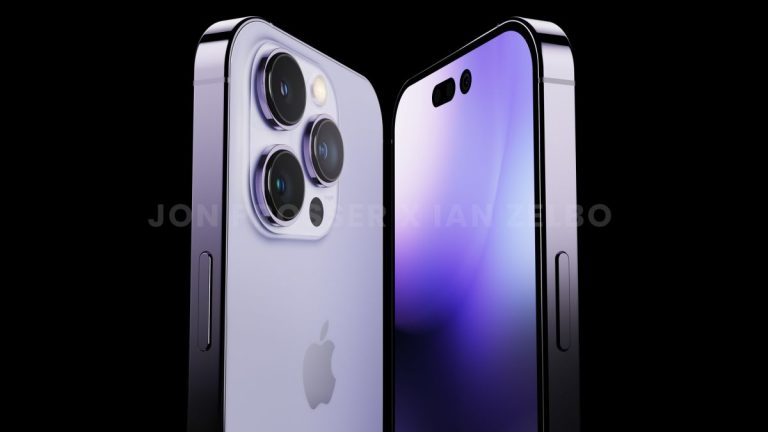
We’re now just a matter of weeks away from a new iPhone launch, as Apple prepares to reveal its latest handset family, the iPhone 14. The latest updates pin an iPhone 14 launch date for an event on September 7. So with the clock ticking until Apple lifts the lid officially on its new iPhone 14 handset family, here’s what we know about the devices so far.
Even more so than with previous generations of iPhone, the iPhone 14 and 14 Pro models are expected to be vastly different from each other when they launch in what’s expected to be the usual September window. Leaks from the supply chain suggest that Apple is doubling down on favoring the more expensive Pro models this time around, with the standard iPhone 14, expected to replace its current iPhone 13, a more modest upgrade over its predecessor.
The launch is also expected to see the end of the iPhone ‘mini’ form factor in favor of a new ‘Max’-sized regular iPhone. This will be a huge change for the line up in terms of its exterior design expectations, even if the internal specification isn’t drastically different from what came before with previous standard-level iPhone handsets. The ‘Pro’, on the other hand, could get a new processor and won’t have a notch, marking significant upgrades to the premium editions of the phone, as well as a new always-on display. Significant camera improvements across the line up are expected however, no matter what device. Here are the details on Apple’s next best iPhone!
iPhone 14 possible release date
The iPhone 14 is expected to debut in the usual September launch window, alongside of the Apple Watch Series 8.
The latest reports from Bloomberg’s Mark Gurman point to a September 7, 2022 launch date for the iPhone 14 (opens in new tab), with the devices going on sale a week later around September 16. This would take the form of an online showcase, rather than an in-person event at Apple Park – the return to in-person normal form from this year’s WWDC 2022 conference seems to have been passed over for iPhone. Gurman also previously stated that Apple had started recording its iPhone 14 event, again further decreasing the chances of Apple hosting a live demo of its newest smartphone.
There have been reports of supply chain struggles, with both the iPhone 14 Pro Max and Max models “a month behind schedule”, but this is not expected to delay the device at all, although it could make the larger ‘Max’ versions of the iPhone harder to get hold off at launch.
Previously educated guesses put the iPhone 14 launch event for Tuesday, September 13, with pre-orders at the end of the week and a release date the following week. It appears Apple has found a way to move up the launch by a number of days.
If that new proposed launch date seems too long to wait, then these iPhone deals are a fantastic shout for getting a new phone at the best possible price.
iPhone 14 models and sizes
The iPhone 13 mini is expected to be the last mini iPhone. Instead, this year Apple will reportedly ditch the diminutive iPhone in favor of a second regular max-sized iPhone. From July:
A source told Nikkei Asia that it is pretty much decided that there won't be a Mini next year. As per previous reports, it is also claimed that Apple is planning to instead adopt a second Max iPhone. The 6.7-inch phone would be a more cost-effective large iPhone with the same form factor as the iPhone 12 Pro Max but with fewer premium features.
Ming-Chi Kuo also reported the iPhone ‘mini’ was on the way out even last year stating, “we predict that the new 2H22 iPhone will have 4 models, namely the high-end 6.7-inch and 6.1-inch models, and the lower-end 6.7-inch and 6.1-inch models.”
Leaked iPhone 14 schematics shared in April appear to reveal two larger iPhone ‘Max’ models that will be 6.7-inches in size, along with two 6.1-inch models.

Further case leaks from July also indicate a new model size in the way.
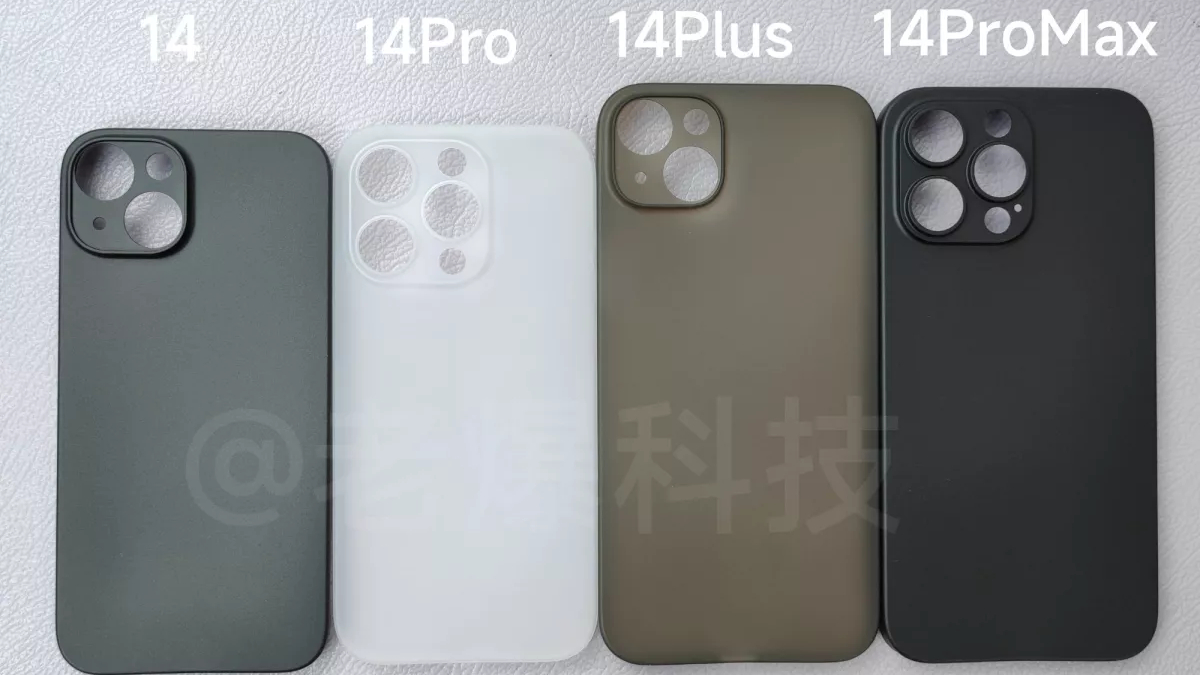
iPhone 14 design
Back in September, we were told by multiple outlets to expect that the iPhone 14 would be a “complete redesign” over the current model. Not only did Mark Gurman leak this, but the information provided by Jon Prosser stated Apple would drop the camera bump from the device in favor of a flat design. However, more recent leaks of CAD renders of both the iPhone 14 and 14 Pro seem to indicate that Apple is not actually planning to change anything about the design of either phone. In March a leak about the iPhone 14’s design revealed the company will retain many of the design features of the current best iPhone, the iPhone 13, namely it’s rear camera bump, squared edges, and more.
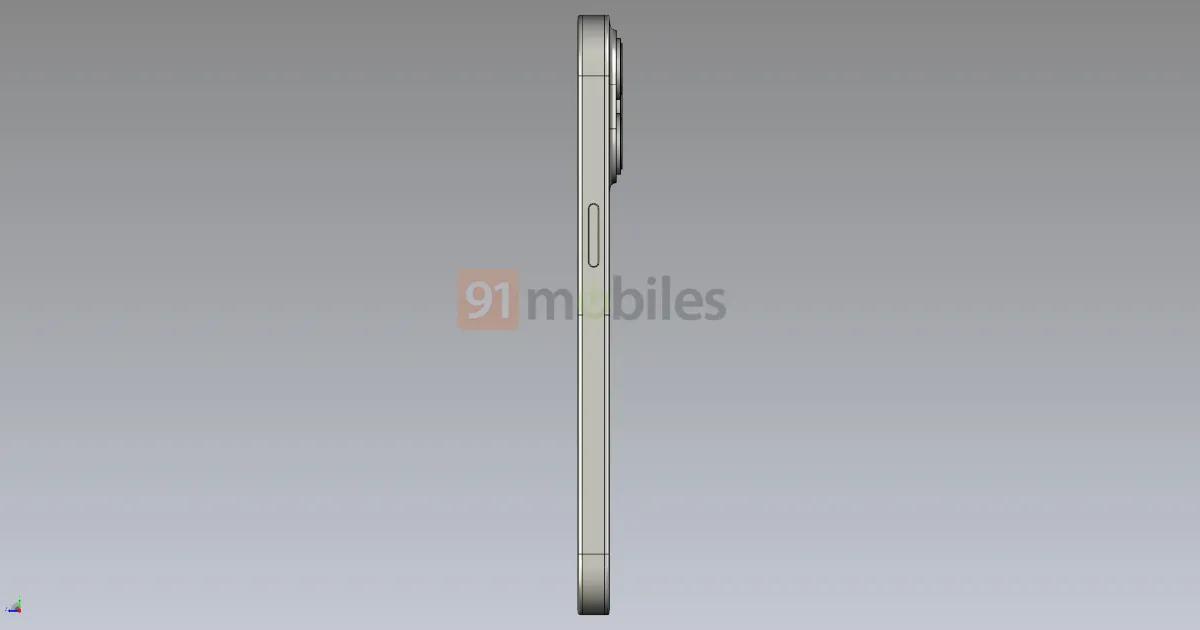
None of the previously rumored changes to the flat back, volume buttons, or anything else seem to be present. The only small confirmed change is a new hole-punch camera to replace the current notch, the array features a pill-shaped hole and a small circular hole, like an exclamation mark on its side.
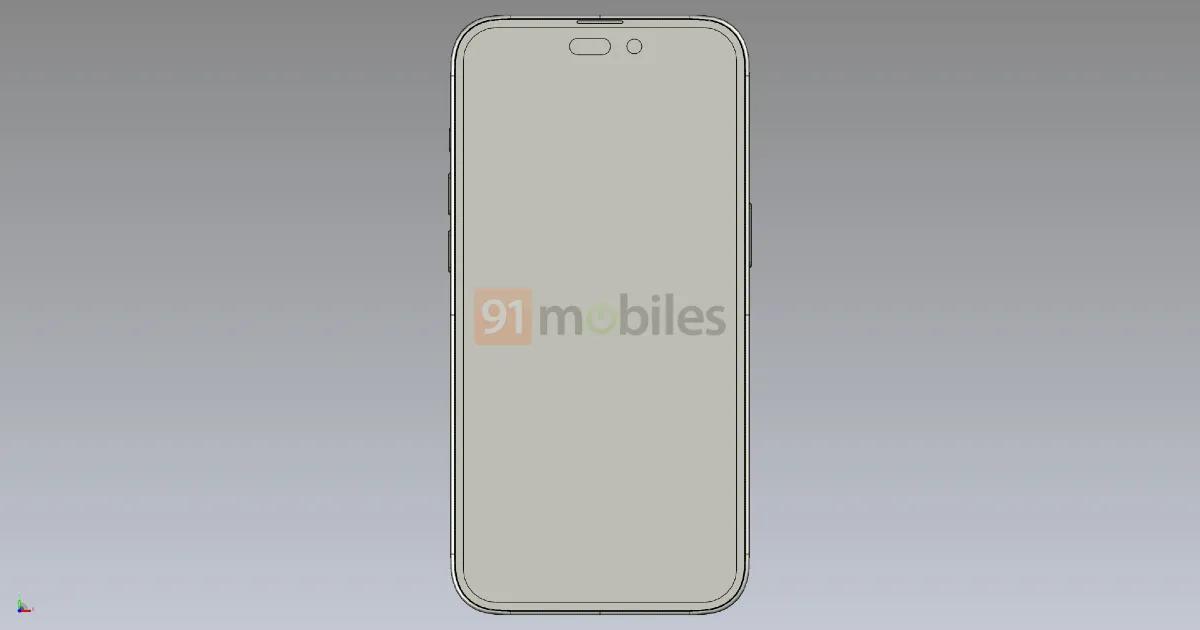
A second set of leaked CAD files for the iPhone 14 revealed that the regular iPhone models will keep a design that is almost identical to the current model, including the bathtub notch.
Very detailed iPhone 14 Pro schematics have also been shared by Max Weinbach, again reiterating all of the aforementioned design changes.
One other key change depicted here is a very large camera bump expected to help make way for some big camera upgrades.
In terms of materials, we can probably expect the same combination of glass and aluminum, although one report has stated Apple may switch to Titanium for use in the chassis of its more premium models.
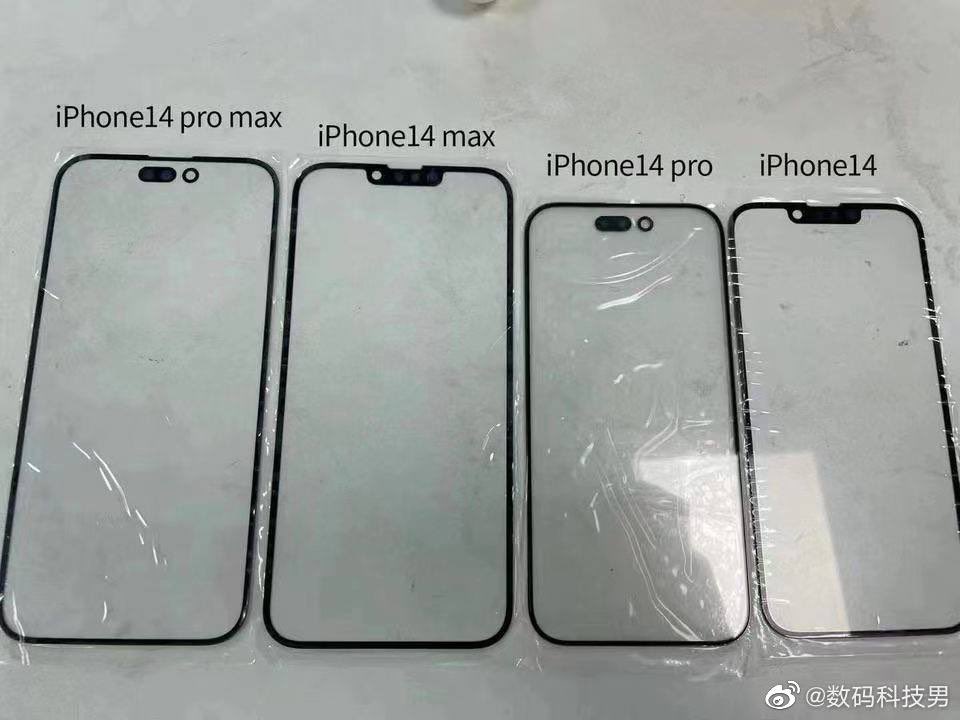
Leaked panels from April again point not only to the end of the mini iPhone but also the notch on the Pro iPhone.
In May Ross Young reported that thinner bezels on the iPhone 14 Pro would make for displays that are a tiny bit bigger than the current iPhone 13 lineup.
- iPhone 13 Pro – 6.06″
- iPhone 14 Pro – 6.12″
- iPhone 13 Pro Max – 6.68″
- iPhone 14 Pro Max – 6.69″
iPhone 14 colors
According to a report in April, Apple is hoping to add a new purple color to both the iPhone 14 Pro and regular iPhone 14 lineup.
Other rumored colors from the report include black, white, blue, and red for the regular iPhone, and graphite, gold, and silver as the other colors for the iPhone 14 Pro. This lines up with previous releases, Apple tends to keep its ‘Pro’ colors quite muted, using the holy trinity of roughly gold, silver, and space grey along with one flash of color like blue or green.
Some of this has been backed up by a more recent rumor that said the company will ditch the Sierra Blue iPhone Pro color and reintroduce Purple into the mix. That report goes further to say that the iPhone 14 Pro and iPhone 14 Pro Max will be offered in “Green, Purple, Silver, Gold, and Graphite.” The regular models are expected to come in Green, Purple, Blue, Black, White, and Red.
iPhone 14 processor
Initial reports indicated that Apple may adopt a 4nm process for use in its new iPhone 14 chip, however, it now seems more likely Apple will stick with the 5nm.
Apple currently uses the A15 chip in the iPhone 13, and Apple’s two base model devices will reportedly retain this chip. Ming-Chi Kuo also reported that the A15 is sticking around, but also says that a new A16 chip is coming to the iPhone 14 Pro and Pro Max. Kuo has stated that this is unlikely to be a major increase in performance and will be more for marketing effect.
Mark Gurman echoed Kuo’s report, claiming that the A16 chip will be exclusive to the iPhone 14 Pro models:
This year, for the first time since Apple started designing its own processors, the company won’t be upgrading the chip inside of its main new iPhone. This fall’s entry-level iPhone 14 models will retain the A15 chip from last year, with only the Pro version getting a new A16 processor.
Despite not getting upgraded to the new A16 chip, a report from Apple leaker ShrimpApplePro says that the iPhone 14 and iPhone 14 Max will still get a performance boost due to upgraded modems, 6GB of RAM, and internal design optimizations.
“Despite using some old hardware, iPhone 14 non-pro still have some overall performance boost over the iPhone 13 series,” the leaker said via their anonymous account. They went on to say that the “new cellular modem, new internals design, etc” will be behind the speed boost despite the older chip being used.
iPhone 14 RAM
While RAM isn’t a huge limiting factor in the iPhone’s design, reports and rumors state that all four models of the iPhone 14 will feature 6GB of RAM, but that it will differentiate between the Pro versions and regular by using LPDDR5 in the former and LPDDR4X in the latter. This means the Pro versions could feature improved performance and power efficiency on the RAM front.
That information has been corroborated by Digitimes, which also says that all of the iPhone 14 models will get 6GB of RAM but the technologies will differ between the regular and Pro models. Regardless of the type of RAM, the inclusion of 6GB is an upgrade over the 4GB of RAM that is currently packed into the iPhone 13 models.
Digitimes repeated this report in July, stating that the iPhone 14 will get 6GB across the lineup, but a snappier and more efficient version in the ‘Pro’ models.
Less reputable leakers have suggested the iPhone 14 could get 8GB of RAM, but this seems less likely, especially in the face of more recent reputable rumors.
The iPhone 13 Pro features a 120Hz ProMotion display, and hypothetically it would make sense that Apple might add this feature to the entire iPhone lineup next year. At least one analyst suggested that ProMotion and the 120Hz display could come to all of the iPhone models. However, multiple more reliable analysts have stated that 120Hz is expected to remain a ‘Pro’ iPhone feature this year, keeping the cost of the regular versions down and helping to differentiate between the two.
However, DSCC’s Ross Young says this is not the case, with a 60Hz LTPS display remaining in the regular iPhone. However, Apple might upgrade the screen in other ways, as it did this year with the Super Retina Display XDR.
Another report from The Elec says that Apple may use different quality OLED materials between its regular and Pro iPhone 14 models. According to the report, Samsung Display will use its new M12 material for the iPhone 14 Pro models, the same material that it is using in its new foldable flagship phones like the Galaxy Z Fold 4 and Galaxy Z Flip 4. The iPhone 14 and iPhone 14 Max, in comparison, will use the older M11 material. Upgrading to the M12 may do more than just enable variable refresh rate and even bring an always-on display to the iPhone 14 Pro models.
One major display upgrade leaked in the iOS 16 beta is the possibility of a new always-on display that would use a variable refresh rate to display your lock screen all the time, much like the Apple Watch Series 7. At least one insider has predicted the iPhone 14 Pro will have a 1Hz display refresh rate mode. This lines up with the intense focus Apple put on its Lock Screen in its latest software version. This feature, like many upgrades this year, is expected to be limited to the ‘Pro’ models. Analyst Ross Young has also backed up reports of an always-on display, as has Bloomberg’s Mark Gurman. In a leak in June, Gurman stated that the iPhone will feature the same tools to hide sensitive Lock Screen data as the Apple Watch:
Like the Apple Watch, the iPhone 14 Pro will be able to show widgets displaying weather, calendars, stocks, activities, and other data while the screen remains at a low brightness and frame rate. And there will be a setting—also like the Apple Watch—that keeps sensitive data from appearing on the lock screen for all to see.
iOS 16 beta 4 includes new wallpapers that have a “Sleep” mode showing a much darker version of the wallpaper, a clear sign that Apple is planning a new always-on mode. The fourth beta of Xcode 14 also appears to show off the feature when using SwiftUI Preview, another indication that it is on the way this fall.
iPhone 14 storage
According to reports, Apple will add a new 2TB storage configuration to the iPhone next year. Likely for the Pro model, this could increase the base storage for those phones and even see 1TB debut in the regular iPhone. It has also been reported that Apple may adopt QLC NAND flash solutions for use as memory in the iPhone 14 this year.
Some reports have speculated that the iPhone 14 Pro and iPhone 14 Pro Max could finally drop the base model storage configuration of 128GB and start everyone at 25GB of storage. However, other analysts disagree.
In an investor note about a month before Apple is expected to host its September iPhone event, Haitong International analyst Jeff Pu says that the firm expects Apple to stick with a 128GB storage option for the base configuration.
“Spec-wise, we add 128GB storage to the Pro line-up.”
iPhone 14 camera
A massive camera upgrade could be on the cards for the iPhone this year by way of a 48MP camera:
Analyst Ming-Chi Kuo believes that Apple will switch to a new 48-megapixel camera next year, while the following year’s device will see Apple jump to a new periscope camera design for the first time. In a research note seen by iMore, Kuo says that the 2022 iPhone — likely to be called iPhone 14 — will use a new 48-megapixel camera. We’ve heard similar rumors before — not least from Kuo himself. The move to such a camera system could allow Apple to take advantage of pixel binning — a process that would allow for more light to be made available during low-light shots while still enabling high-resolution stills to be taken in well-lit scenes.
Similarly analyst Jeff Pu says the new iPhone will get a triple-lens rear camera system featuring a 48MP wide lens. That increase could also allow for 8K video recording.
Mark Gurman has also stated that the iPhone 14 Pro will get a 48MP wide-angle lens.
Kuo also says that Apple may be planning to significantly upgrade its front-facing camera which could bring improved focus and better aperture for improved portrait mode in both photos and FaceTime.
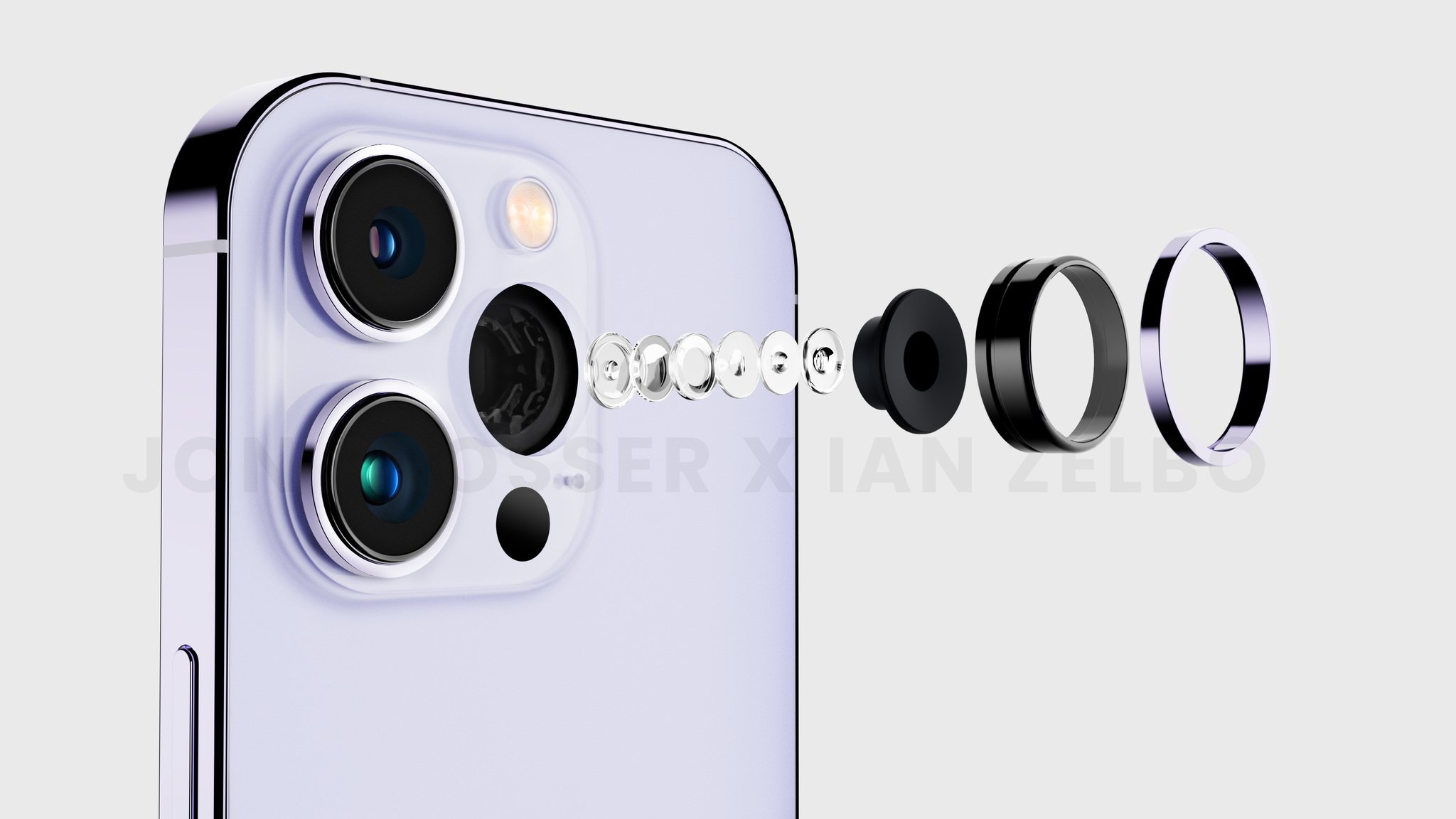
iPhone 14 battery
According to DSCC’s Ross Young, the iPhone 14 will have larger batteries across the board, boosting capacity and powering more features.
In addition to featuring larger batteries, a report in August says that the new iPhones could also feature faster charging speeds. The new iPhones could support charging speeds as high as 30 watts, but that appears to be peak performance. The same report notes that speeds are likely to “drop down to 27-25W” after a short while.
Even if that decrease is the case, it would still represent the fastest charging speeds available so far in an iPhone. Of course, those charging speeds will only get that high with wired charging. MagSafe charging still tops out at 15W and regular wireless charging is still at 7.5W. It’s unclear if Apple plans to improve those types of charging.
iPhone 14 5G and connectivity
iPhone 14 will feature 5G like its predecessors and could debut support for more countries as the iPhone 13 did. There have also been reports that Apple will use 6nm TSMC 5G chips that will improve power consumption and battery life when surfing over 5G. The chips are also smaller, making way for other components. These chips could also pave the way for Wi-Fi 6E connectivity. Ming-Chi Kuo also reports Apple’s next iPhone may feature Wi-Fi 6E connectivity, which is around three times faster than Wi-Fi 5 and gives users the option of operating on the 6GHz spectrum as well as the 2.4GHz and 5GHz radio bands.
Reports of satellite-enabled communication for emergencies haven’t materialized with iPhone 13, so that could also be another feature to look out for. Mark Gurman has previously stated the iPhone 14 could include satellite emergency texting and an SOS feature. According to that report the feature would be used for transmitting short emergency text messages to emergency services in disaster situations like a plane crash or a sinking ship. The satellite function would not be used for day-to-day communication like texting or iMessage.
Another possible connectivity change could come with a use of eSIMs, with one analyst expecting that Apple could launch an eSIM-only variant of the new iPhone, while retaining the physical SIM slot model for those that want and need it.
iPhone 14 Face ID and Touch ID
There are no indications that Apple is planning to reintroduce Touch ID in any capacity. We had previously heard from a reliable analyst that Apple could introduce an under-display Face ID camera, however multiple persistant rumors that the iPhone will still feature either a notch or a hole-punch camera configuration seem to render this possibility redundnant.
iPhone 14 price and availability
Our most recent reports are mixed as to whether Apple will increase the price of the iPhone 14. In July, Wedbush analyst Dan Ives warned that the iPhone 14 could be $100 more expensive than the iPhone 13 as Apple looks to cope with increasing costs across its whole supply chain.
With a rumor of 2TB storage and the possibility of a larger base storage model, it does seem possible that the iPhone 14 may be more expensive than the current version. However, Apple surprised us by keeping the price the same last year with the iPhone 13, even lowering it in some places when compared to iPhone 12.
While Dan Ives believes the price could go up as much as $100 for each model of the iPhone 14, a more recent report in August from a leaker with a mixed track record says that Apple will keep the same base price of $799 with the iPhone 14. That will still result in a higher average selling price if the company nixes the $699 iPhone 14 mini in favor of an $899 iPhone 14 Max, a likely scenario as rumors continue to grow ahead of Apple’s September iPhone event.
Even closer to September’s iPhone event, supply chain analyst Ming-Chi Kuo chimed in, predicting that Apple will raise the price of the iPhone 14 Pro models:
“I estimated iPhone 14 series ASP would increase by about 15% (vs. iPhone 13 series ASP) to $1,000-1,050 (USD) due to two iPhone 14 Pro’s price hikes & higher shipment proportion.”
While it’s unclear exactly how much of a price hike customers could experience with the Pro models, it would mean that we could lose the existence of a base model iPhone 14 Pro costing just under a thousand dollars. The iPhone 13 Pro starts at $999 and the iPhone 13 Pro Max starts at $1099, and Apple usually starts prices at hundred dollar increments, so it’s reasonable to think the iPhone 14 Pro could start at $1099 and the Pro Max at $1199. For anyone keeping track, the base model iPhone 14 Pro Max could be the same price as a base model M2 MacBook Air.
Ives, who back in July said that the $100 price increase could affect all iPhone 14 models, put out an investor note closer to Apple’s September event that agreed with the leaker and Kuo and said that the $100 price increase will be limited to the iPhone 14 Pro and iPhone 14 Pro Max. The regular iPhone 14 is expected to remain at its current $799 price point and the rumored iPhone 14 Max is expected to start at $899. Ives says that the price increase to the Pro models is due to higher component costs:
In particular we believe Apple is expecting another heavy iPhone Pro and Pro Max mix shift which is a clear positive for ASPs heading into FY23. While the base iPhone will stay at the same price we believe a $100 price increase on the iPhone 14 Pro/Pro Max is likely in store given component price increases as well as added functionality on this new release.
Analyst Jeff Pu reported in March that the iPhone 14’s pricing would be “critical” to its success and so expected a starting price “close to the iPhone 13.”
There have been murmurings of some supply chain disruption for iPhone 14, particularly for display panels of the larger models. Reports in July indicate these will likely not have an impact on either the launch window or the availability of the device.
Reports at the end of July indicate that the iPhone 14’s rear lens is suffering from coating-crack issues, as such Apple has had to shift around 10 million orders from supplier Genius to Largan to avoid disruption.
According to reports in August, Apple is set to manufacture its iPhone 14 from launch in both China and India, the first time a flagship iPhone will be made outside China from day one.
